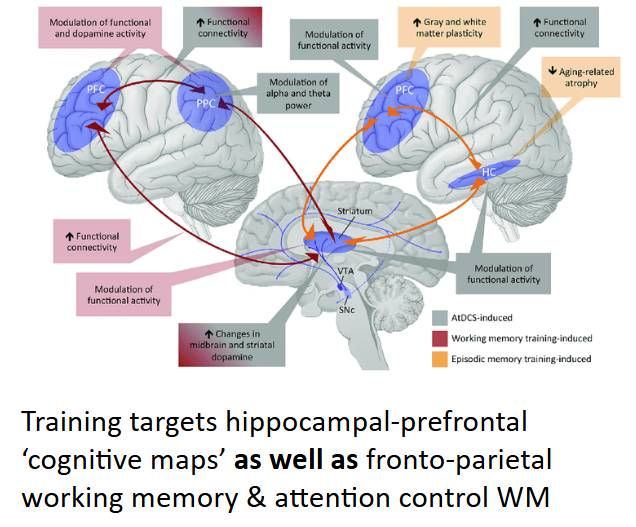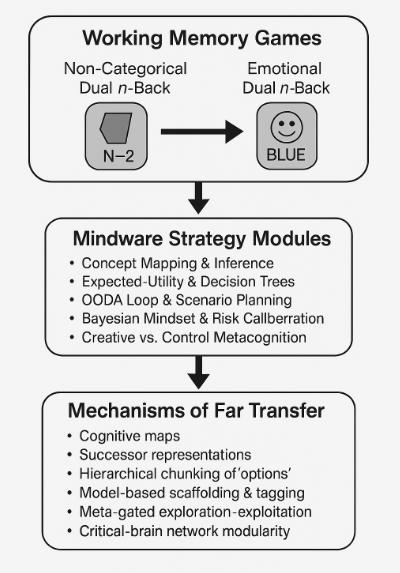Why Trident G Brain Training Works
Far Transfer
“Far transfer” refers to the ability for training in one task to improve performance on a very different, unpracticed task—say, practicing an n-back working-memory game and then getting better at solving novel logic puzzles or real-world problems. Decades of research, however, have shown that while people reliably improve on the specific tasks they practice (near transfer), those gains almost never generalize to new domains: a 2010 meta-analysis of dozens of working-memory training studies found no meaningful improvements on measures of fluid intelligence or other far-transfer outcomes, despite large practice effects on the trained games . This failure of far transfer has been the central challenge in cognitive training, spurring the search for approaches—like hippocampal-map strategies—that engage the brain’s relational and predictive circuitry to produce true, cross-domain benefits.
Why The Trident G Program Delivers Far-Transfer
There are actually two working memory systems involved in general intelligence - a fronto-parietal loop (top left) for limited capacity short term memory, and a long term hippocampal -prefrontal loop (top right) for cognitive maps and deeper relational reasoning using cognitive maps. This cognitive map system is what is critical for 'far transfer' from brain training.
Traditional brain training games train the short term WM system, but not the long-term WM system.

The mechanisms for increasing intelligence from IQ Mindware's two core DNB games - which are not available elsewhere - combined with strategy training, are shown below:

Cognitive maps & successor representations
Your brain builds a “map” of task states and how they follow one another, allowing you to predict and navigate new problems by instantly recomputing outcomes based on learned transitions.
Hierarchical chunking of “options”
Repeated practice groups sequences of steps into reusable subroutines (options), so you can solve complex tasks by stringing together familiar chunks rather than starting from scratch.
Model-based scaffolding & tagging
Explicit strategy lessons briefly engage planning circuits to label new rules and strategies, which are then “tagged” onto automated routines so you can apply them without rethinking each time.
Meta-gated exploration–exploitation
Dynamic “gates” balance trying new approaches (exploration) and using proven habits (exploitation) based on your uncertainty and success rates, keeping learning both flexible and efficient.
Critical-brain network modularity
Training tunes your brain’s networks to operate near an optimal balance of integration and segregation, maximising information flow and adaptability when facing novel challenges.
Generalisation to Strategy Tasks & g (IQ)
These mechanisms seamlessly integrate both capacity and strategy training - enabling you to apply the skills and efficiencies of your DNB training to high level IQ strategies for decision trees, problem solving, learning, etc.